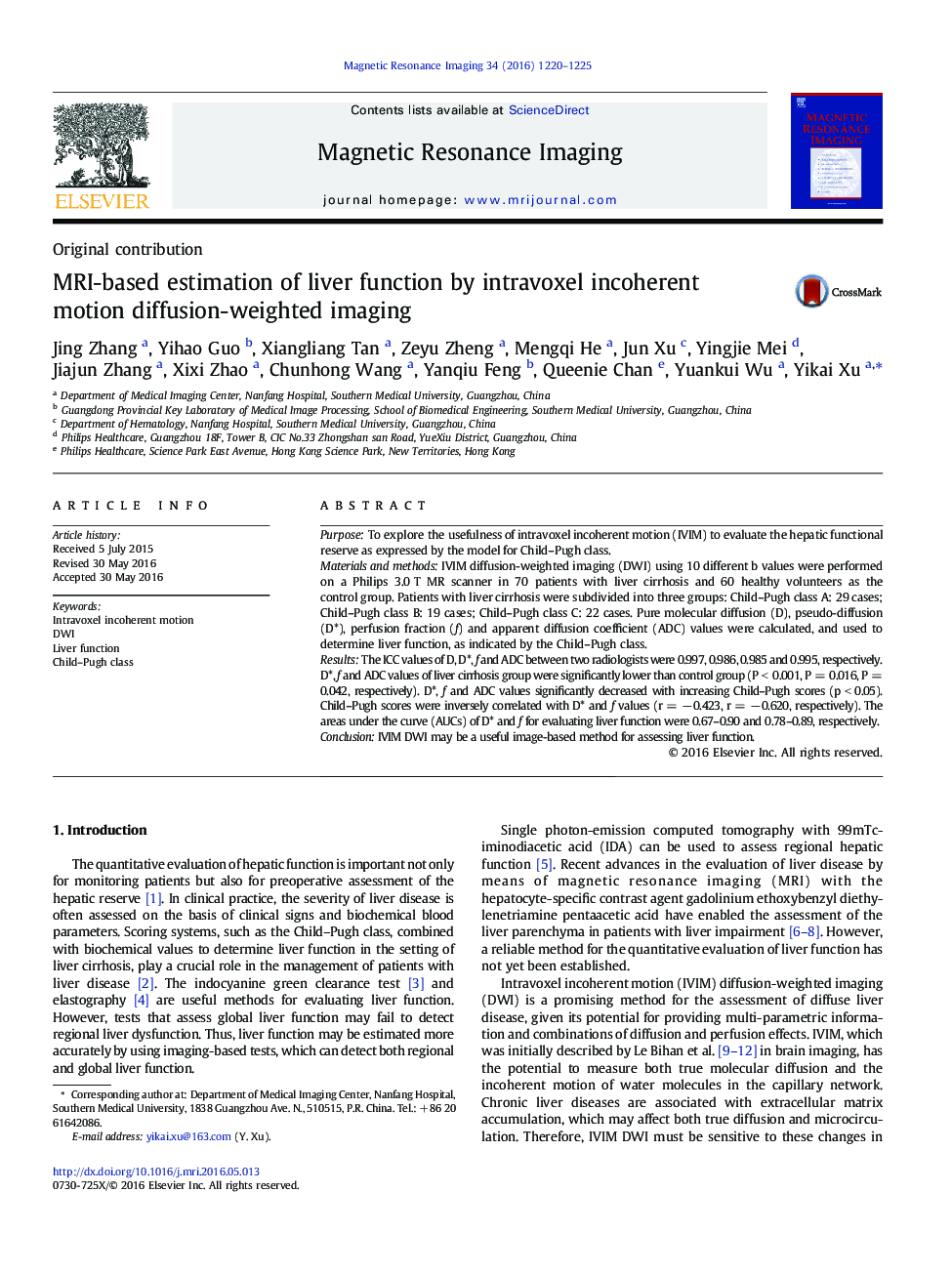| Article ID | Journal | Published Year | Pages | File Type |
|---|---|---|---|---|
| 1806128 | Magnetic Resonance Imaging | 2016 | 6 Pages |
PurposeTo explore the usefulness of intravoxel incoherent motion (IVIM) to evaluate the hepatic functional reserve as expressed by the model for Child–Pugh class.Materials and methodsIVIM diffusion-weighted imaging (DWI) using 10 different b values were performed on a Philips 3.0 T MR scanner in 70 patients with liver cirrhosis and 60 healthy volunteers as the control group. Patients with liver cirrhosis were subdivided into three groups: Child–Pugh class A: 29 cases; Child–Pugh class B: 19 cases; Child–Pugh class C: 22 cases. Pure molecular diffusion (D), pseudo-diffusion (D*), perfusion fraction (f) and apparent diffusion coefficient (ADC) values were calculated, and used to determine liver function, as indicated by the Child–Pugh class.ResultsThe ICC values of D, D*, f and ADC between two radiologists were 0.997, 0.986, 0.985 and 0.995, respectively. D*, f and ADC values of liver cirrhosis group were significantly lower than control group (P < 0.001, P = 0.016, P = 0.042, respectively). D*, f and ADC values significantly decreased with increasing Child–Pugh scores (p < 0.05). Child–Pugh scores were inversely correlated with D* and f values (r = − 0.423, r = − 0.620, respectively). The areas under the curve (AUCs) of D* and f for evaluating liver function were 0.67–0.90 and 0.78–0.89, respectively.ConclusionIVIM DWI may be a useful image-based method for assessing liver function.
